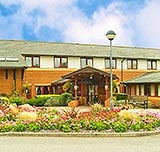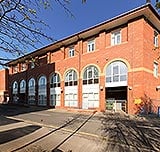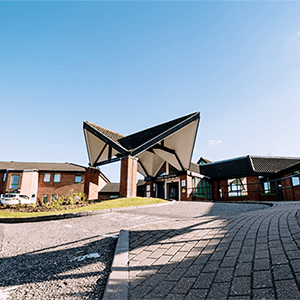
Orthotics is a specialty concerned with the provision of external devices/aids to any part of your body to prevent or correct deformity, promote or improve function of an affected area, or support pain reduction.
Orthotics involves the design, manufacture, fitting and application of these externally applied devices. It is so called as these devices are known as orthoses. They include braces, splints, footwear, insoles and supports that are used to guide and limit or immobilise joints that are injured, or to more evenly distribute weight bearing forces across joints and alleviate pain.
Our consultant orthotists work as part of a multi-disciplinary team of physiotherapists, podiatrists, consultant orthopaedic surgeons, consultant neurosurgeons and consultant rheumatologists to provide the best treatment options for your individual condition or injury.
There are many different options and your orthotist will discuss the appropriate devices with you. Their main aim is to allow you to be more mobile and independent by making them as comfortable and functional as possible. They can:
An orthotist will initially perform a full clinical assessment. This usually involves a static and dynamic biomechanical assessment. They will then discuss appropriate and individualised orthoses for your treatment.
A static assessment is when you’re not moving and can be either weight bearing or non-weight bearing. Your consultant will see any unusual joint positions and check for muscle strength.
A dynamic assessment is a weight bearing assessment of your body whilst moving so that your consultant can see if there are any unusual joint positions or movements whilst moving.
Ankle foot orthoses (AFO)
There are many types of AFO such as rigid, hinged, dynamic, prefabricated and silicon. The decision will be based on the function you require of the device, your level of mobility and your health. AFOs aim to improve your mobility, support rehabilitation and your biomechanical goals. They are often used for conditions such as foot drop or reduced ankle stability.
Foot orthoses (FO)
Foot orthoses are devices that are worn in your shoes to change the way your foot works whilst walking and to provide cushioning or support. They can reduce pain, prevent or halt the development of a foot deformity, improve positioning, relieve pressure on a certain area of your foot and improve the biomechanical function of your foot, reduce lower limb and knee stress and improve pelvic alignment.
They are used for posture related pains, such as forefoot pain (metatarsalgia), heel pain (plantar fasciitis), heel spur, ankle pain (tibialis dysfunction, lateral impingement syndrome), knee pain (patellofemoral pain syndrome, patella tibial syndrome), shin pain (compartmental syndrome, shin splints), and hip and back pain.
Shoe inserts and insoles can be made of various materials and are selected on your weight, the reason for the inserts, and the type of footwear that the inserts are to be used with. You may be recommended shoe adaptations such as compensatory raises, rocker soles, wedges or flares.
Ankle foot orthoses (AFOs)
Ankle foot orthoses are designed to make standing and walking easier. They can control your foot and ankle position, accommodate a fixed joint position, compensate for muscle weakness, and reduce pain. AFOs are designed to be worn with footwear.
Knee ankle foot orthosis (KAFO))
These orthoses are used to compensate for muscle weakness, paralysis or skeletal problems which cause lower limb instability. They make standing and walking easier by: controlling knee and ankle joint instability, preventing excessive joint movement, improving your joint alignment and reducing pain. KAFOs can be metal or plastic. They are often used in the treatment of neurological conditions such as cerebral palsy, multiple sclerosis, spina bifida and traumatic brain injury.
Knee orthoses
Knee orthoses or braces are used for many problems affecting your knee joint such as knee ligament injuries, sports injuries, arthritis and patella dislocations. They help to reduce pain and stabilise your knee so that you can continue with normal everyday life and return to contact sports.
These orthoses are used to control the movement of your knee and ankle. They can be used for joint protection, pain reduction or support after surgery.
Spinal orthoses
Spinal orthoses, also known as back supports or back braces, are used to correct, control, support and immobilise spinal deformities and injuries. They can control joint instability, prevent excessive joint movement, improve joint alignment and reduce joint pain.
These devices are designed for your individual needs and fall into three types: rigid devices with plastic or metal sections or supports, fabric devices and a combination of rigid and fabric sections.
here are many prefabricated and custom-made orthoses. It’s important that they are fitted by a fully qualified orthotist or podiatrist.
These include insoles, foot supports and orthotic boots. They are often bought for mild pain and to help in rehabilitation.
It’s best to have your problem assessed first by a consultant orthotist or podiatrist as custom made orthoses may be a better option for you.
These can specifically suit and fit the shape of your foot. Assessments are carried out to determine the problem and casts can be made for a customised orthotic. Wearing custom made designs may take a little getting used to but they can take away any pain that is being caused by the problem immediately.
The fitting of your orthosis can take up to one or two hours, depending on its complexity. Sometimes, more than one fitting is required to adjust and fine tune your orthoses. Footwear and insoles may need to be worn in gradually.





We are delighted to announce the appointment of Miss Sabeen Akhtar as the new Group Medical Director at Ramsay Health Care UK.
Springfield, part of Ramsay Health Care UK, is delighted to announce that men suffering from a benign enlarged prostate (Benign Prostatic Hyperplasia) will be able to receive robotic Aquablation Therapy.
Ramsay Health Care UK joined Leeds Pride to celebrate love, unity, and inclusion. Our growing culture of allyship ensures colleagues and patients feel seen, valued, and celebrated.
The information, including but not limited to, text, graphics, images and other material, contained on this website is for educational purposes only and not intended to be a substitute for medical advice, diagnosis or treatment. Always seek the advice of your physician or other qualified health care provider with any questions you may have regarding a medical condition or treatment.
No warranty or guarantee is made that the information contained on this website is complete or accurate in every respect. The testimonials, statements, and opinions presented on our website are applicable to the individuals depicted. Results will vary and may not be representative of the experience of others. Prior patient results are only provided as examples of what may be achievable. Individual results will vary and no guarantee is stated or implied by any photo use or any statement on this website.
Ramsay is a trusted provider of plastic or reconstructive surgery treatments as a part of our wrap-around holistic patient care. Our personal, friendly and professional team are here to support you throughout to ensure the best possible care. All procedures we perform are clinically justified.
*Acceptance is subject to status. Terms and conditions apply. Ramsay Health Care UK Operations Limited is authorised and regulated by the Financial Conduct authority under FRN 702886. Ramsay Healthcare UK Operations is acting as a credit broker to Chrysalis Finance Limited.
Ramsay Health Care UK is not currently recruiting for any roles based outside of England. If you are interested in applying for a role with Ramsay Health Care UK, please note that all available positions are advertised exclusively on our official website: https://www.ramsayhealth.co.uk/careers. Be cautious of individuals or organisations that approach you directly for remotely-based roles. Always verify the authenticity of the job offer and be careful with whom you share your personal information. For more information and advice on employment fraud, please visit: https://www.ramsayhealth.co.uk/careers/recruitment-fraud